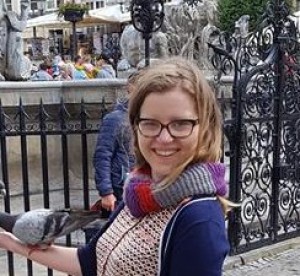Dr Urszula McClurg
 MSc, PhD
MSc, PhDTenure Track Fellow
University of Liverpool
 United Kingdom
United Kingdom0151 795 7735
urszula.mcclurg@liverpool.ac.uk
www.liverpool.ac.uk/integrative-biology/staff/urszula-mcclurg/research/
Research Interests
cancer, meiosis, centrosome, synaptonemal complex, cell division
Meiosis is a process of cell division employed for the production of gametes. During meiosis four daughter cells with single copies of chromosomes are produced. For successful meiotic cell division to occur the gamete needs to polarise and produce an unequal division spindle plane. In mitosis this is done by the centrosomes locating to two poles of the cell to allow for the division of chromosomes. However, in meiosis it was believed that centrosomes dissipate in prophase accompanied by the loss of centrioles and formation of multiple microtubule organising centres (MTOCs) that are involved in spindle assembly. Recent studies questioned these observations and reported that centriole remnants persist in fully grown oocytes. We have also observed that centrin-rich structures surrounded by pericentriolar proteins can be observed at all stages of meiosis.
My group is focused on the process of transition from meiosis to mitosis. The process of somatic cell division requires both the synthesis of the centrosomes and the accurate and specific silencing of meiotic genes when cells transition to mitosis. Remarkably, the specific mechanisms of meiotic silencing are very poorly understood. Furthermore, evidence now exists that failure of this silencing process is common in cancer and we found that some of these abberantly re-expressed proteins are responsible for meiotic centrosome-like structures.
Our main research interests are:
1. To determine how meiotic genes are specifically silenced and how is this silencing coordinated between 46 chromosomes.
2. To identify molecular mechanisms responsible for the failure of silencing and the re-expression of meiotic proteins in cancer.
3. To determine the origin of mitotic centrosomes.


